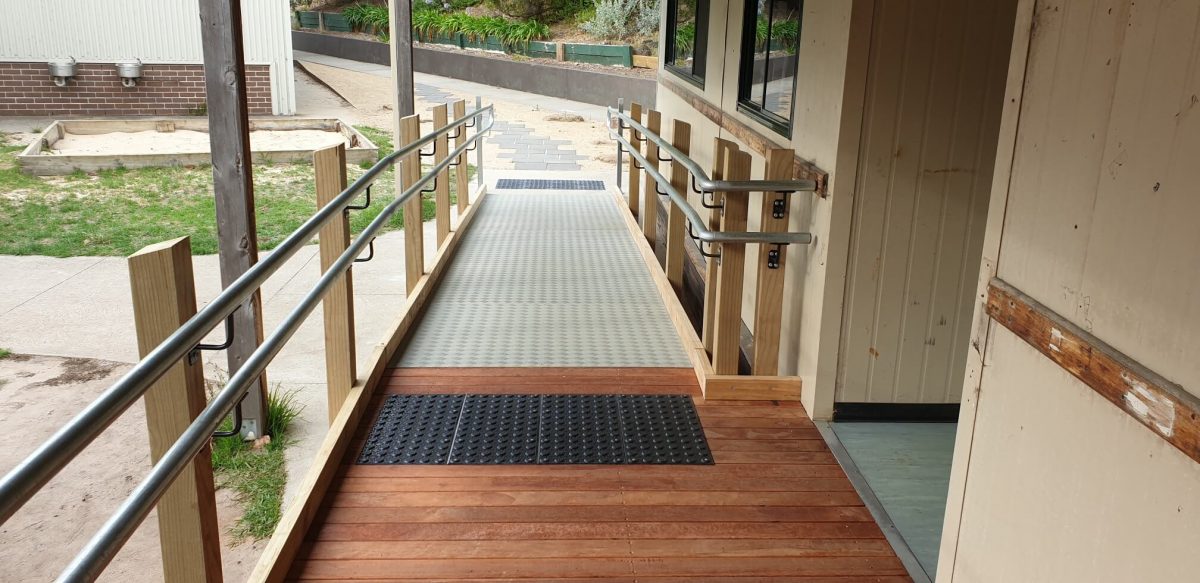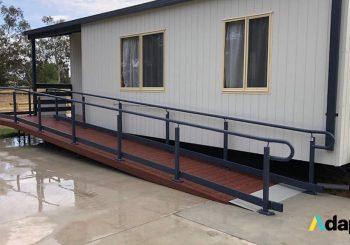Wheelchair and accessibility ramps provide individuals with mobility issues an easy and safe way to visit public areas. Due to the nature of these types of ramps, the Disability Discrimination Act and the Australian Standards require them to have certain safety features in order to make them more user-friendly.
Aside from having properly designed handrails, ramps, especially those with a slope of over 1:20, must have slip-resistant surfaces. This feature can help prevent injuries by minimising the risk of falls and accidents.
Although most ramps are already built with non-skid surfaces, some of them still have to be slightly modified in order to have this feature. If your home or business establishment has an accessibility ramp that doesn’t have a non-slip surface, below are a few materials and techniques that you can try out to make your ramp safer for users.
Rubber Mat
Probably the most practical way to add a non-slip surface to a ramp is by laying down a rubber or PVC mat on top of it. This is the same type of material commonly used on the floors of gyms, playgrounds, and day-care centres. The mats can be easily placed on ramp surfaces to provide more traction, which is an important factor especially for people with mobility problems.
When choosing a rubber matting, make sure to select a model that’s suitable for outdoor use so it can withstand being exposed to harsh weather conditions. Also, keep in mind that since rubber mats are usually not permanent fixtures, they can sometimes move or get dislodged. You can keep them in place by using adhesive strips. It’s also ideal to replace the mats often to prevent them from getting too worn out.
Paint Additive
For a more permanent solution, you can turn to materials that can be added to paint to make it more slip-resistant. One of the most practical and effective anti-skid paint additives that you can use is sand. This method is commonly used by interior designers and those who enjoy doing DIY projects. They usually mix paint with sand before applying it on walls for decorative purposes. Aside from its aesthetic appeal, applying a paint and sand mixture on a ramp also provides added grip to its surface.
Other paint additives come in liquid form. They are usually designed to be mixed with paint or applied later to a surface as a final or top coat. However, before using this method, make sure that your paint and additive products are suitable for your metal, concrete, or wooden ramp.
Anti-Slip Tape
If you don’t want to paint your entire ramp, you can follow a more minimalistic technique by using anti-slip tape. This self-adhesive product features a gritty surface coating that’s designed to provide added texture to objects. Since it comes in tape form, you can apply strips to the ramp’s high-contact areas instead of covering the entire surface. Some anti-slip tape rolls also have glow-in-the-dark properties, which make them more visible at night.
In addition, using non-slip tape on your ramp is a non-permanent solution. This means you can easily remove the tape strips without damaging the surface of your ramp or drastically altering its appearance.
Rolled Roofing
Another method that you should consider is using rolled roofing. This material, which is made of asphalt, is commonly used on roofs. However, due to its characteristics, rolled roofing is frequently used to provide a non-slip surface on walkways and ramps.
A roofing roll with a mineral surface is commonly used for this type of application due to its gritty texture. It is relatively cheaper than other options and is easy to apply. Just make sure that the type of roofing roll that you’ll use is suitable for your ramp’s surface materials.
Heating Mats
These products are capable of producing heat using an electronic power source. More importantly, their non-skid surface can prevent people from slipping as they cross ramps. Although heating mats seem similar to their rubber counterparts discussed earlier in this article, their ability to provide warmth electronically makes them a highly preferred option.
These mats can generally provide enough heat to melt heat and snow, which is a helpful and ideal feature during the winter and cold seasons. By keeping ramps clear of snow and ice, heating mats can make ramps safer and more slip-resistant.




